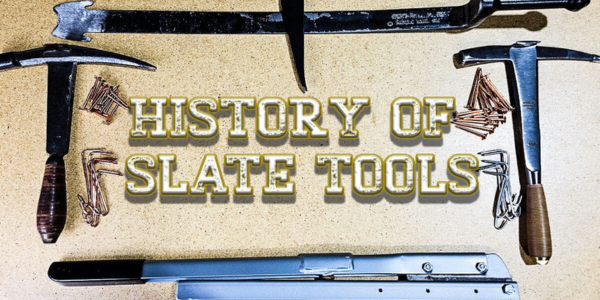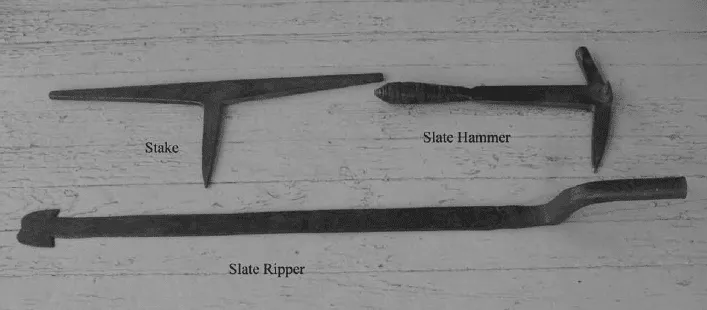The evolution of slating tools

By National Slate Association.
Catalog the various tools used for slate roofing and their advancements over the centuries.
Slating tools have a long and rich history dating back to ancient times. Rippers, hammers and stakes have all been used to install and repair slate roofs over the centuries. While many of these tools have gone unchanged since their inceptions, others have been refined over time to better suit modern needs. The National Slate Association has cataloged the transformation of many of these tools to preserve their rich histories.

History of slate tools
Slate rippers
Slate rippers were used in repair work to remove slate shingles. The length of a ripper’s blade varied from 21 inches to 30 inches, depending on the length of the slates being removed. Handles were smooth or formed with finger grips. An advertisement from 1897 Strelinger & Co. catalog shows that slate rippers have not changed dramatically in the past century compared with slate rippers of today.
T-shaped skate
The T-shaped skate, sometimes called a slater’s tee, is also pictured in the Strelinger & Co. advertisement. It was used to trim and punch slate for nail holes. The cross bar of the “T” was either straight or curved to facilitate the trimming of the slate in a radiused pattern. With straight-topped stakes, the slater’s tendency was to move the hammer along the top of the stake as trimming proceeded. When the top of the stake was curved, it was the slate that tended to get moved, thereby making it easier to trim on the radius. Stakes are still used today, although not as commonly as in the past. Some modern stakes have rules engraved on their edges to aid with trimming slates to size.

Slate hammers
Slate hammers had a curved head with a sharp point on one end for punching nail holes in slates and a hammer head at the other for driving nails to secure the shingle. The length and curvature of the hammer’s head varied. The handles of slate hammers were either wood or leather. Many contemporary slate hammers have a beveled edge on the shaft, which can be used for cutting slate and a nail pulling claw at the crossing point between the handle and head. Two similar tools are depicted in Randle Holme’s Academy of Armory, written in 1688, A slater’s pick had a curved head, pointed at both ends, for punching nail holes and a slater’s hatchet had a flat head for driving nails and a sharp, hatchet-like edge for trimming the end of a wood lath on which the slates were installed. The modern slate hammer may have evolved from a combination of these historic tools.
Slate knife
A slate knife (sometimes called a zax of hewing knife) had a heavy rectangular blade with a sharp edge for cutting slate. It also sometimes had a sharp point protruding from the blade, which was used for punching nail holes. Today, the slate hammer, which can cut and punch slate as well as hammer nails, has taken the place of the slate knife.
Original article and image source: National Slate Association
Learn more about National Slate Association (NSA) in their Coffee Shop Directory or visit www.slateassociation.org.
Recommended For You

Will Your Hard Hat Become a Projectile During a Fall? Hard Hats Only Protect Your Head if They Stay on
Read More ...
CertainTeed's residential roofing shingle portfolio earns prestigious good housekeeping seal
Read More ...
CertainTeed Announces Availability of New CERTAplank™ Reinforced Siding
Read More ...

















Comments
Leave a Reply
Have an account? Login to leave a comment!
Sign In